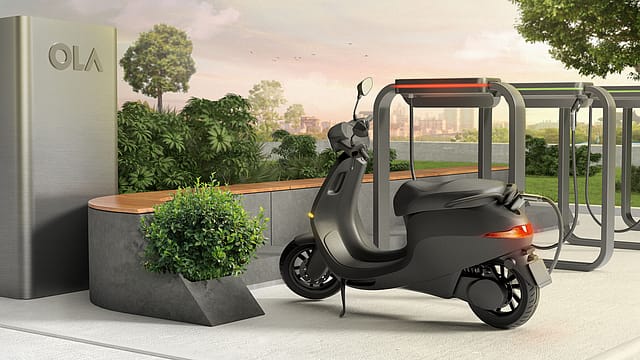Ola offers free replacement of S1 scooter part amid safety concerns
ADVERTISEMENT

Ola Electric on Tuesday said it is giving an option to customers of its electric scooter S1 to replace the front fork arm free of cost amid safety concerns.
The electric two-wheeler maker said there have been some concerns among the community around the safety of the front fork arm. It, however, added that such concerns are "unfounded".
"To alleviate any concerns that you or any of our community members might have, we are giving an option to our customers to upgrade to the new front fork," the Bengaluru-based company said in a statement.
"At Ola, all components of our scooters including the front fork arm are thoroughly tested under extreme conditions and are engineered with a factor of safety much higher than the typical loads encountered on vehicles," the Bhavish Aggarwal-led company said.
"However, as part of our continuous engineering and design improvement process, we have recently upgraded the front fork design to enhance the durability and strength even further," the EV maker said.
To get the free upgrade, customers can book an appointment at their nearest Ola Experience Centre or Service Centre before visiting. This upgrade will be free of cost and the appointment window will open starting March 22, the company said.
January 2026
Netflix, which has been in India for a decade, has successfully struck a balance between high-class premium content and pricing that attracts a range of customers. Find out how the U.S. streaming giant evolved in India, plus an exclusive interview with CEO Ted Sarandos. Also read about the Best Investments for 2026, and how rising growth and easing inflation will come in handy for finance minister Nirmala Sitharaman as she prepares Budget 2026.
According to a report by Bain & Company, electric vehicles will create material new revenue and profit pools, generating $76 billion-$100 billion of cumulative revenue opportunity and $8 billion-$11 billion of profit across the EV value chain.
The global consultancy expects 35-40% of all vehicles sold in India by 2030 to be EVs, up from 2% in 2022.
The two-wheeler and three-wheeler segments will be the vanguards for EV adoption, achieving 40-45% penetration by 2030, the report said. This, according to Bain & Company, is driven by several factors, including highly competitive total cost of ownership, limited need for public charging infrastructure given the adequacy of home charging for daily use, investments in building compelling product offerings with comparable performance to ICE vehicles, and early adoption by delivery and logistics fleets.
Four-wheeler passenger vehicles (PVs) will remain behind on the adoption curve. Higher requirements for product performance and build-out of public charging infrastructure, plus higher capital cost and total cost of ownership gaps, serve as barriers to adoption, the report said. Even with these challenges, this segment is still expected to achieve 15%–20% market penetration by 2030.
